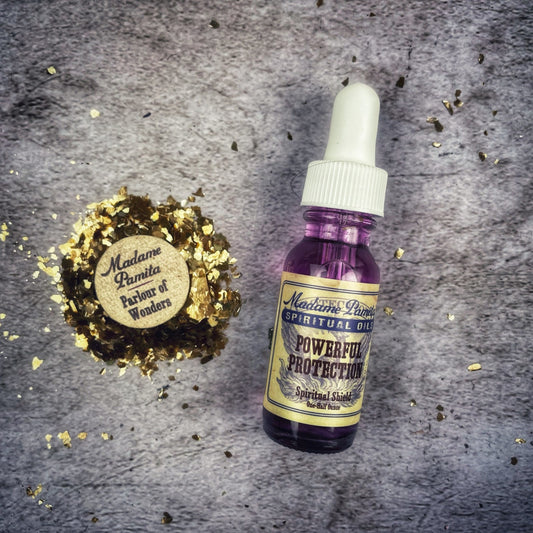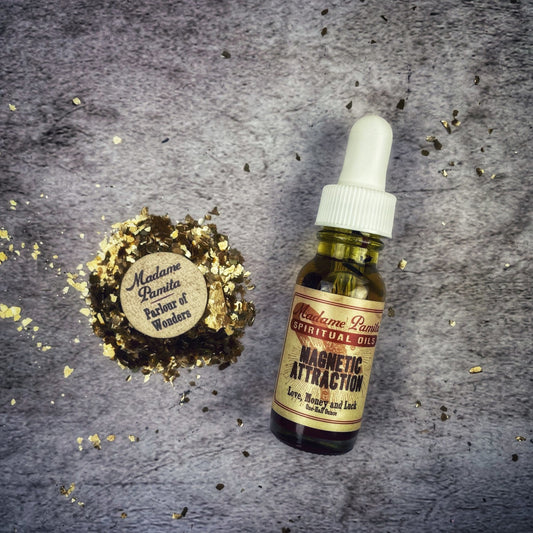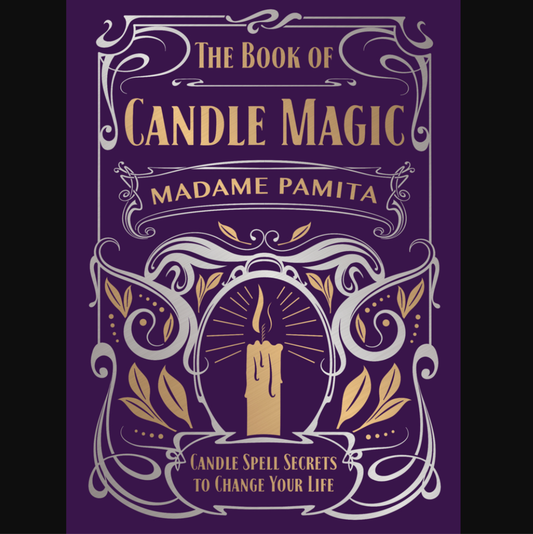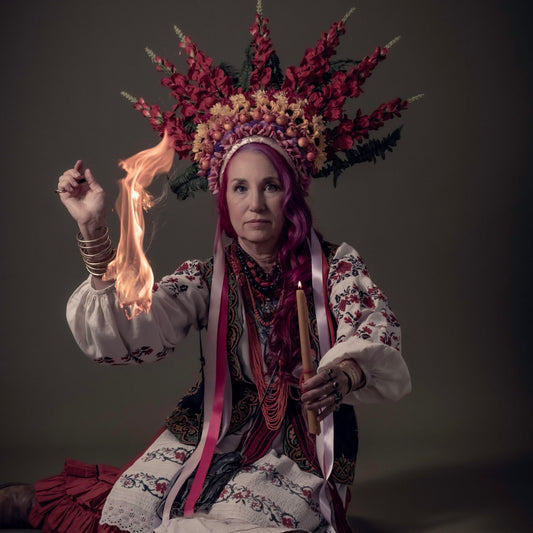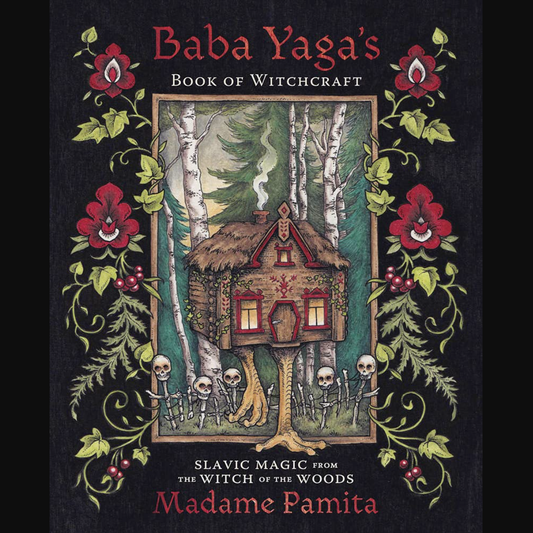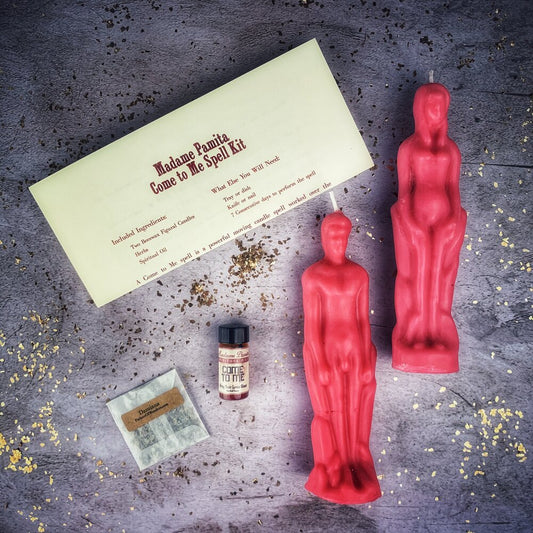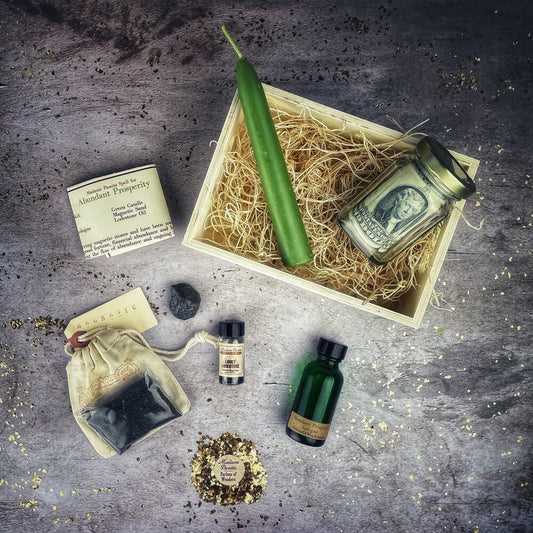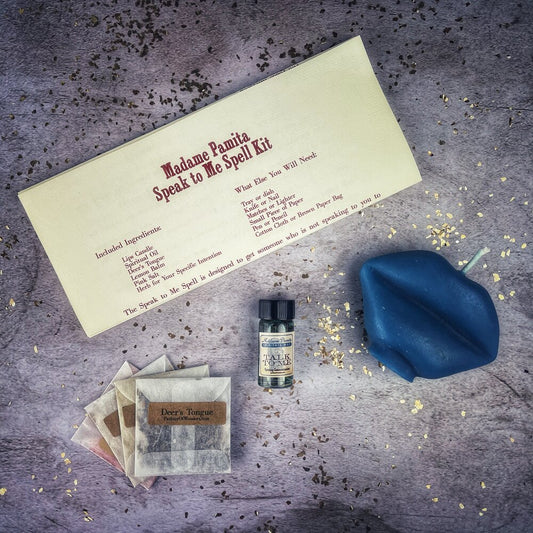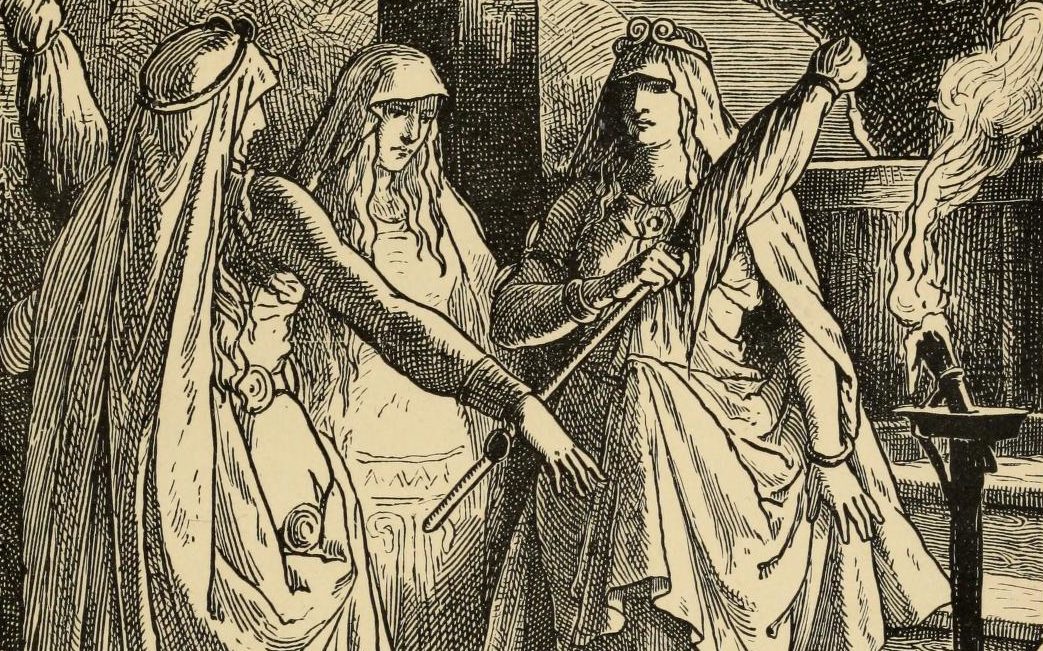
How To Use Runes in Spells, Magic and Divination
Share
Are you familiar with using runes in spells, magic, and divination? Many of us who are knowledgeable about magic have at least a basic understanding of runes and may have even used them for divination. For those who are new to their magic, runes are often seen as a tool for divination, similar to tarot cards, but their magical uses go beyond that.
There are amazing, phenomenal, beautiful ways to start working with the runes, even if you have no experience with them. You don't have to memorize anything, and you don't have to have a long, deep relationship with runes to begin your journey. However, these techniques don't prevent that from happening. There are many ways to work with the runes, even if you aren't using them as a divination tool yet.
I want to clarify that I am not an expert on runes, but I am passionate about them. I love working with them so much that I have Wunjo and Dagaz runes tattooed on each wrist. Wunjo signifies joy, while Dagaz represents breakthrough and awakening. These symbols embody what I aim to bring into my daily life and practice: happiness, awakening, and breakthroughs. Who wouldn't want that? I certainly do.
Getting runes tattooed is not a divination practice, but it is one of the way sof bringing the runes into your magic. Divination is only the tip of the iceberg when it comes to what you can do with runes.

The Different Types of Runes
Let's delve into the history of runes. Runes can be traced back to around 100 CE, which marks the earliest evidence of their existence through archaeological findings. The Germanic people, including the Norse Vikings, developed this written alphabet. You might have come across the terms Elder Futhark or Younger Futhark. The runic alphabet is referred to as a Futhark, which consists of the first six letters of the runic alphabet. Similar to how the word "alphabet" contains "alpha" and "beta," the Futhark is the name of the runic alphabet, named after the first six letters of the Norse writing system.
Due to their ancient origin, we have limited knowledge about The Elder Futhark. The Elder Futhark comprises 24 characters and was predominantly used from around 100 CE to 700 CE. The Elder Futhark is the most commonly seen runic alphabet in rune sets, which contain 24 runes, occasionally 25 when a blank one is included in the set.
The Younger Futhark consists of only 16 characters. The Norse people condensed the alphabet to these characters, discarding the rest. This runic alphabet was in use from around 700 CE up until the Middle Ages (1200 CE).
Additionally, there is another runic alphabet called the Anglo-Saxon Runes, which contains 33 characters and was mainly used in England. However, when we think of runic divination sets, we are almost exclusively referring to the Elder Futhark.


Getting to Know The Elder Futhark
The runes are not only an incredible divination tool, but they were also a functional alphabet. It's important to consider this when working with them. Unlike tarot, which is primarily used for divination, runes have the unique quality of being a written alphabet. This makes them very special.
Runes have been discovered on various archaeological finds across England, Scandinavian countries, and beyond. They were often carved on stones, including memorial stones for the deceased, as well as on bone, antler, wood, and metal.
While evidence of these letters is widespread, runes are more than just an alphabet. Each letter carries a specific and significant magical meaning. Understanding their magical meanings becomes easier when you learn about the legends that the Norse people had about the runes. So, I'll share with you the legend of the runes, which demonstrates how these magical tools were considered powerful by Norse people.

The Story of Odin
Odin, the Norse god and leader of the gods known as The Æsir, was always seeking wisdom and knowledge. He understood the power of knowledge and often went on adventures to gain magical skills and special knowledge. Odin was willing to sacrifice for wisdom, as evidenced by the fact that he had one eye plucked out in exchange for a piece of wisdom. He intimately understood the concept of sacrificing to gain magical wisdom and knowledge.


Yggdrasil: The World Tree
In Norse mythology, there were beliefs in a World Tree known as Yggdrasil. Yggdrasil was thought to be a giant tree that supports all the worlds. At the base of the tree was the Well of Urd, a deep well that provided water and nourishment to the World Tree, enabling it to grow and protect the worlds. The Norns, three powerful women, resided around the Well of Urd and controlled the fate of all beings, including the gods.
The Norns used runes carved into Yggdrasil's trunk to control fate. The energy of these runes extended to the upper world, middle world, and lower world, allowing the Norns to influence everything using these mystical shapes. Despite their power, the meanings of these runes remained a mystery to others, including the gods.


Odin Envied the Norns' Power
Odin was curious and also envious of the Norns' power to influence the fate of everyone, including the gods and goddesses. He decided to gain the knowledge of the meaning of the runes for himself.
To achieve this, he hung himself from the tree Yggdrasil and peered into the Well of Urd, a shamanic act symbolizing the crossing between the worlds of the living and the dead. For nine days, Odin hung in a state between life and death, seeking the insights and abilities that the Norns possessed.


Odin's Sacrifice
Odin told the other Æsir, "Don't help me, don't try to rescue me, don't try to save me. I must go through this extreme trial to be able to understand the runes. My deepest desire is to have this knowledge." As he stared downward for days and days, he called to the runes, inviting them in, and teetering in a liminal state between life and death. Anyone who has ever been in that state of one foot in the world of spirit and one foot in the world of the living knows that it is an intense place to be.
For nine days and nights, he did this, and on the ninth night, at last, he saw the runes in the depths of the water. Because he had made the sacrifice, the runes showed themselves to him. Urd revealed not only the form of the runes but also the secrets that they held. He understood them, he could use them, and work with them.


The Hanged Man is Odin
The story of Odin is depicted in the image of The Hanged Man card in the tarot deck. The card shows a man with a radiant halo around his head, hanging upside down by his foot, reminiscent of Odin's story.
When Odin learned the runes, he gained various abilities such as healing wounds, binding his enemies, ruining the weapons of his enemies, waking the dead, winning and keeping a lover, freeing himself of constraints, putting out fires, exposing and banishing practitioners of malevolent magic, and protecting his loved ones in battle.
Although the runes are strongly associated with Odin, they are about the Norns. They allow us to tap into the power of these mysterious, powerful women who held this information and allowed Odin to uncover it through sacrifice. Just like Odin, we can access the power of the runes. The runes belong to the world of the Norns, and we can be like Odin, making a sacrifice to learn the runes and work with them in our magic.
There are various ways to work with the runes in your magic. The simplest way is to get a set of the Elder Futhark, learn about them, look them up in the little booklet, or get a book about the runes and learn what they mean. You can carry one or two that you want to empower yourself with, place them on an altar, hold them in your hands and feel for their energy, or create a Bind Rune.


What Are Bind Runes?
Bind runes are combinations of two or more runes that are often used for magical purposes, serving as powerful amulets. They date back to the 1600s and were first observed in Iceland. You can use bind runes for magical purposes by writing them on paper, inscribing them in candles, or carving them into wood or stone. There are numerous ways to create and utilize bind runes to incorporate the essence of the runes into your magical practice.


Overlay Bind Runes
One method of creating a bind rune is by overlaying runes on top of each other. It's like placing two runes on separate clear sheets of plastic and then stacking them. When combined, they form a new shape. These overlaid bind runes are used in spells to bring about a desired reality.
The Bluetooth logo is actually a stacked bind rune. The ᛒ shape represents nurturing, protection, support, and creation, while the other rune, Hagall from the Younger Futhark, looks like ᚼ and means hail. When stacked on top of each other, they create the Bluetooth logo. This is one way to create a bind rune.

Same-Stave Bind Runes
There's another way that we can create a bind rune, which is to stack them. It's almost like stacking vegetables on a shish kebab. If you hold up that shish kebab skewer, you can see all the different vegetables. Similarly, you can stack a series of runic letters in a specific order along a single axis. This is called a same-stave rune. Stave is a word for staff. So, same-stave runes are like arrows, spears, or sticks. They are used to attack a problem. If you're trying to conquer something or aim to be victorious over something, that's when you might want to use a same-stave rune.


Radial Bind Runes
Another type of rune often seen in jewelry is the radial rune. These runes are similar to stave runes, but they consist of several staves protruding like spokes on a wheel, each with a rune at the end or in the middle. Radial runes are commonly used in defense spells, protection spells, and amulets. When incorporated into amulets or talismans, this design is both aesthetically pleasing and potent.

Make Your Own Bind Rune
If you want to create a bind rune, follow these steps.
- First, identify your magical goal. Consider what you want to achieve and what you want the bind rune to address.
- Once you are clear about your magical goal, select the rune or runes that align with your purpose.
- You can repeat a rune around the central rune or stack the runes, choosing the ones that best suit your intention.
Choose Your Runes
You can choose two, three, or four runes. Avoid using the entire Futhark to maintain clarity of intention.
Choose Your Design
Once you have selected the runes, begin experimenting with your design on scratch paper. Ensure that you adhere to the design style that aligns with your specific intention:
- Manifestation: Overlay Bind Rune
- Protection: Radial Bind Rune
- Attack a Problem: Same-Stave Bind Rune


Choose Your Material
After you've finalized your design on paper, you can choose the material to work with for your rune. Here are a few examples:
- Write it on a slip of paper and carry it with you.
- Carve it into wood or stone.
- Engrave it into the side of a beeswax candle.
- Get a tattoo of it or draw it on yourself.
You don't even need to physically create anything to use your bind rune. As long as you know what it looks like, you could trace it in the air or simply visualize it. You can do this whenever you need to harness its power.

If you are interested in working with runes but haven't learned to use them for divination, consider using them as a magical tool. Connect with their energy and invite them into your life. It's incredibly powerful, beautiful, and ancient magic that is truly lovely.
Watch My Podcast Episode On Runes
JOIN THE SPELL SQUAD

If you’ve enjoyed this free lesson, I’d love to invite you to get more free magical instruction sent to your email inbox! Join the Spell Squad and you’ll get a free 33-page eBook – “Seven Secrets to Supercharge Your Spellwork” plus the code to join me for my Live Magic Q&A Tea Party where you can ask your questions about magic.
Check out my other Witchcraft How To Guides and learn how to do magic. Want even more? Join The Coven!
This article was sourced from Madame Pamita's podcast and edited using Grammarly AI


















